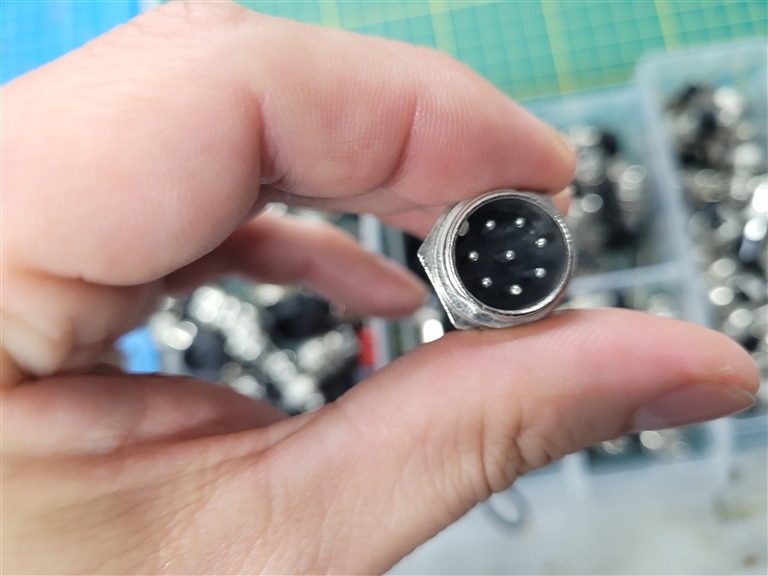My original plan for this months blog was to build the side panels for my machine, but during measuring the sides I thought more about the challenges of routing the cables and encountered a few possible issues with shaping the panels. A painfull accident this week lead me to sit down and postpone the panel fabrication for a later point.
And then it dawned on me:



During the build of my cnc one theme occured mutliple times. connectors.
And a weird situation emerged.
Commonly mounted on a lot of cnc parts and adjacent machinery you find aviation connectors. Round screw locked metal & plastic retro looking connectors with a wide variety of sizes and pin numbers.
And couriously they are only available on the usual dodgy sources and not part of a standard program of any reputable manufacturer nor could I find any datasheets or a set standard for these anywhere.
I would vastly prefer a standardized connector with a certified current carry capability that I could get form multiple known manufacturers via my usual distributors.
But it seems like there is a weird spot in the market where professional connectors are just to expensive and only these weirder ones are used.
As most hobby folks do ,I have a vast collection of cheap connectors in stock that I just used for this build without thinking more about them in the beginning, just because some of my parts came with them already installed.
Just now I realized that all my calculations about wire gauges for specific loads are deemed pointless if the connectors are just not up to sthe task.
All my assumptions about their capabilities and resistances are just that, assumptions.


I’m hoping for the Element14 hive mind to solve the ridle:
What is the true name of aviation connectors.
What standards/norms to they confrom to.
What loads can the truly carry and how to know if the ones I have are up to my tasks.
With connectors Ii often boils down to trust in the manufacturers processes and given data.
I realised very late into the project that most lines might deal with loads of 2-4A @ 48V continous, which is no childs play. Having no data or even a reliable source for these mission critical parts makes me feel uneasy abotu powering up the machine.
Should I switch the whole scheme of connectors to a reputable manufacturers product, if so which ones?
Or is there a good way to test them myself without just applying destructive loads?
How would I know if they hold long term?
I’m a bit charred by an event in 2014. The Lamp of my aquarium was visibly flickering when I came home from work. I lifted the top and was very surprised to see a tiny fire flaring up in the connector to the flourescent tube that got extinguished just a second later by a drop of water.
This cycle constantly went on and I watched it for minutes, sparks, fire, water and so on..
judging from the damage I could see and the massive build up of charred black residue I think this has been happening unknowingly for weeks.
And I think that could be a scenario happening in a similar fashion with connectors that have a bigger than expected or uneven contact resistance in combination with my expected high loads during cnc operation. I had similar issues with sparks going from an underspeced connector (factory installed!!!) to the grounded chassis of my laser cutter. These arks where audible but I shrugged them off as random fan noises until lower power cuts where visible periodically on my workpieces leading me to investigate the laser source cabeling. I found it barely in time to avoid permanent damage to the machine or having an unknown little fire going in the electronics compartement during operation.
All these stories just to ask you the Element14 community for your favourite connectors for big loads and possibly alongside data transfer. They have to be locking in place, but fit a typical hobby budget.
So I’m very courious if you think I’m just overly worried or if these aviation connectors are indeed a risk or fire hazard in the waiting.

Top Comments